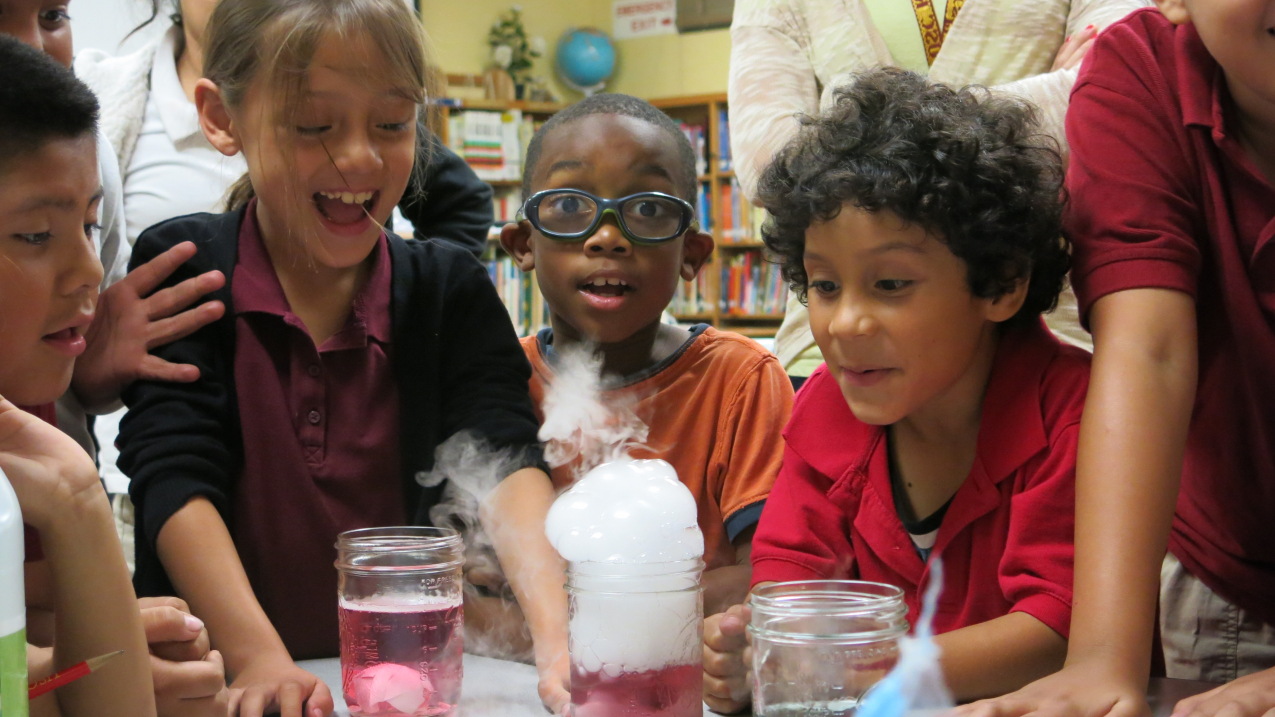
Students of a NOAA Planet Stewards Educator participating in a hands-on activity to understand the impacts of ocean acidification. In this experiment, dry ice (frozen carbon dioxide) is added to water with soap. When the dry ice touches the soapy water, it quickly undergoes sublimation, or turns from a solid to a gas without first becoming water. The carbon dioxide gas is captured in soap bubbles, seen in this picture. (Image credit: D.J. Cast)


